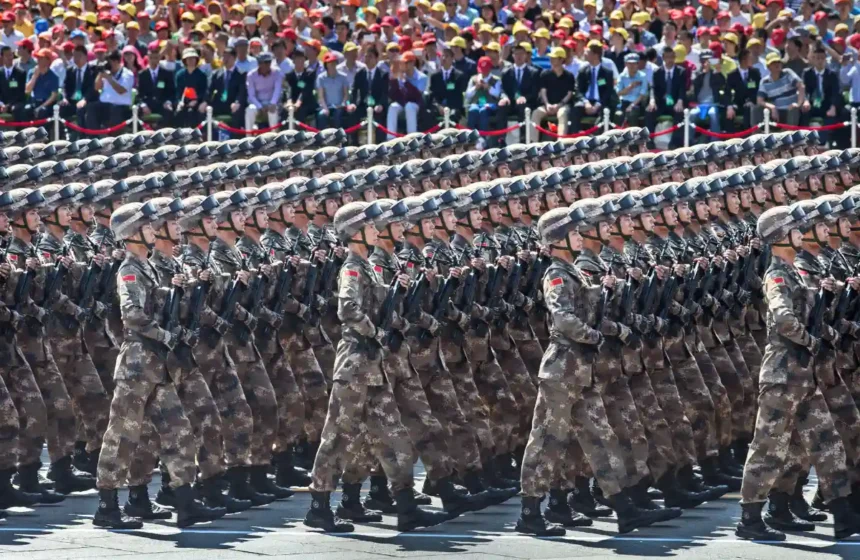China latest military parade in Beijing has once again made headlines worldwide. More than a display of discipline and pageantry, the event showcased intercontinental missiles, futuristic laser systems, and advanced drones, underscoring Beijing rapid defense modernization.
The parade was both a message of national pride and a clear signal to global rivals that China intends to be a dominant military power.
A Parade With a Purpose
In China, military parades are more than ceremonial celebrations. They are carefully choreographed shows of strength, designed to reassure citizens and warn competitors.
This year spectacle saw units of the People Liberation Army (PLA) march in unison while some of the country most advanced weaponry was revealed for the first time. For Beijing, the message was unmistakable: China military is modern, powerful, and ready to compete with the best.
Missiles on Display
Missiles remain the backbone of China defense strategy, and the parade spotlighted both familiar and new systems:
- DF-41 Intercontinental Ballistic Missile (ICBM): Capable of carrying multiple nuclear warheads with a range of over 12,000 km, giving China the ability to strike almost anywhere in the world.
- DF-17 Hypersonic Glide Vehicle: Noted for its incredible speed and maneuverability, making it extremely difficult to intercept by current missile defense systems.
- Tactical Short-Range Missiles: Built for quick deployment in regional hotspots such as the South China Sea or Taiwan Strait.
The upgrades underline how China missile arsenal is evolving into one of the most versatile and sophisticated in the world.
The Rise of Laser Weapons
Perhaps the most futuristic part of the parade was the laser defense systems. While details remain classified, the technology on display suggests that China is moving quickly toward deploying directed-energy weapons.
If successful, these lasers could neutralize drones, aircraft, and even satellites, offering faster and cheaper defense compared to traditional missiles.
Analysts believe China focus on lasers is also a signal of its ambitions to dominate emerging battlefields in space and cyber warfare.
Drones in the Spotlight
Drones have already reshaped modern conflicts, and China is betting big on them. The parade highlighted several new UAVs (unmanned aerial vehicles):
- Stealth Recon Drones: Capable of flying long missions while avoiding radar detection.
- Armed Combat Drones: Equipped with precision-guided missiles for offensive operations.
- Drone Swarms: Multiple drones working together to overwhelm enemy defenses, a tactic that could transform future warfare.
The display reinforced China commitment to integrating drones deeply into its military strategy, mirroring their rising importance globally.
Global Reactions and Security Concerns
The parade drew mixed responses worldwide.
- Within China: Citizens celebrated it as a symbol of unity, progress, and national pride.
- India, Japan, Australia: Analysts in the Asia-Pacific warned that the show of strength could further destabilize the region.
- United States: Washington has long criticized Beijing defense expansion, especially in the South China Sea. The display of hypersonic missiles and advanced drones is expected to intensify U.S. defense debates.
- Arms Race Fears: The unveiling of laser systems and hypersonic tech could accelerate a new global arms race as nations scramble to catch up.
More Than Just Weapons
For the Chinese public, the parade was about more than hardware. The perfectly synchronized soldiers, fighter jets soaring overhead, and futuristic machines painted a picture of a confident China that sees itself as a rising global leader.
The event was a reminder that Beijing’s ambitions extend beyond economics and trade — it now wants to be seen as a technological and military powerhouse shaping the future of global security.









